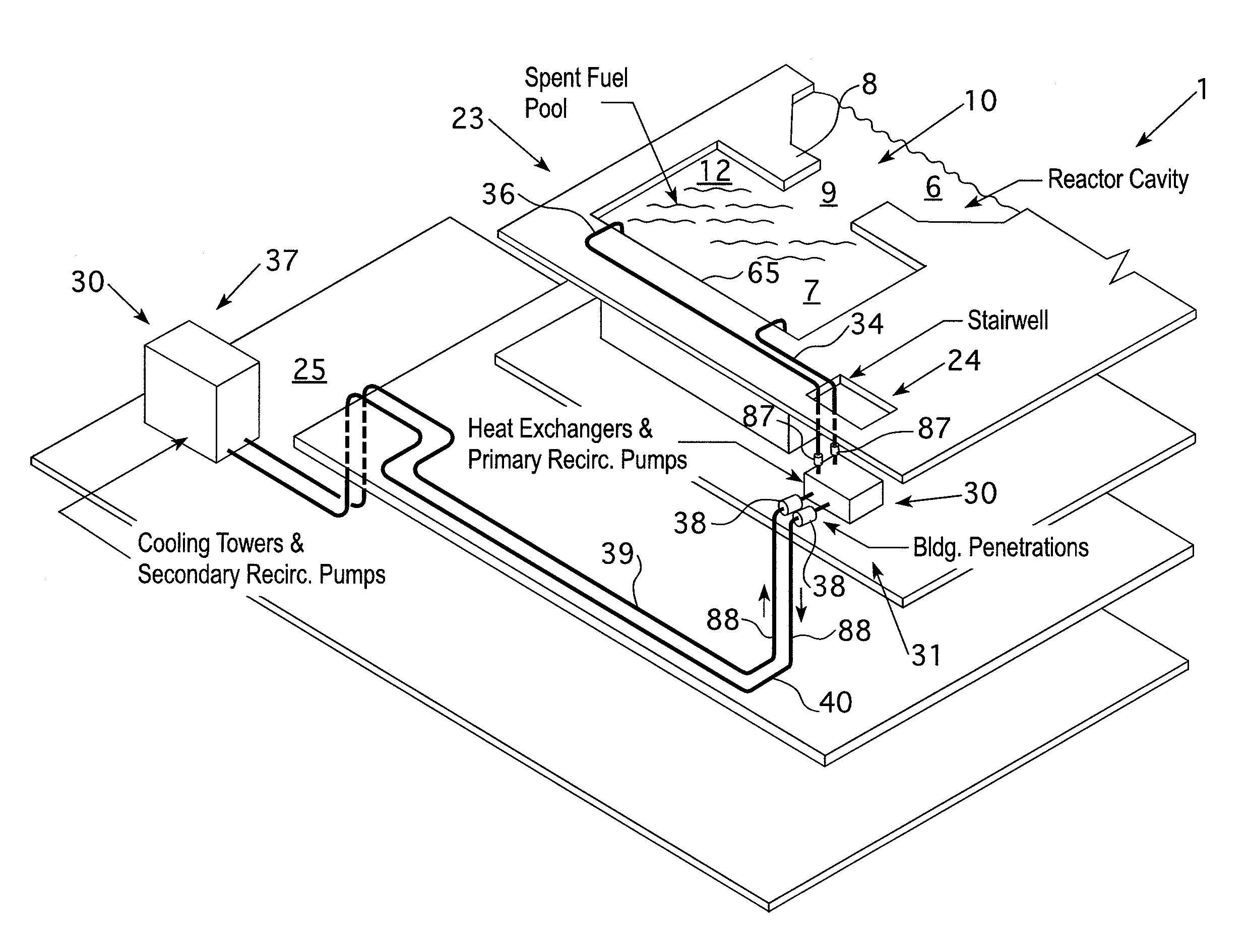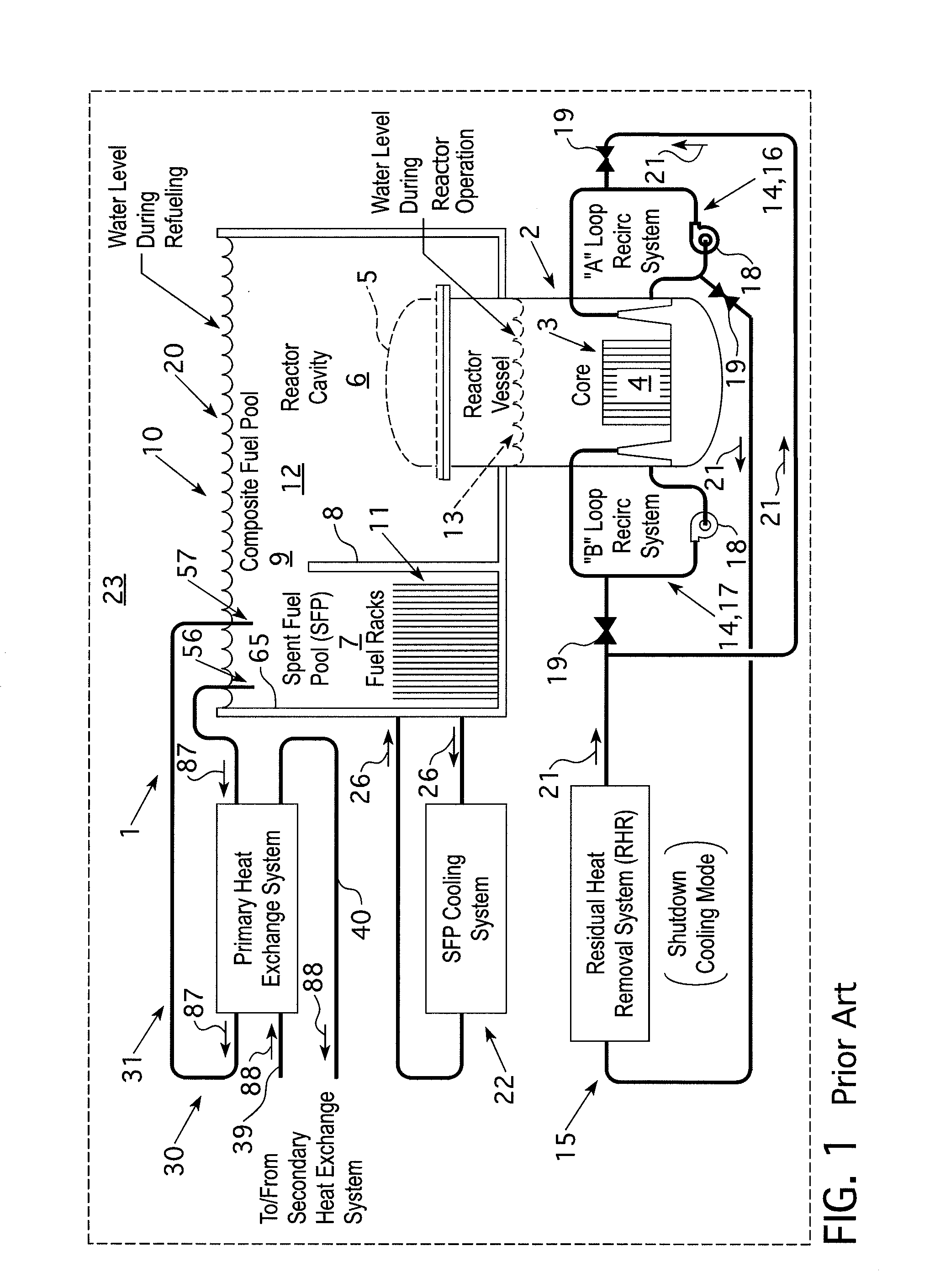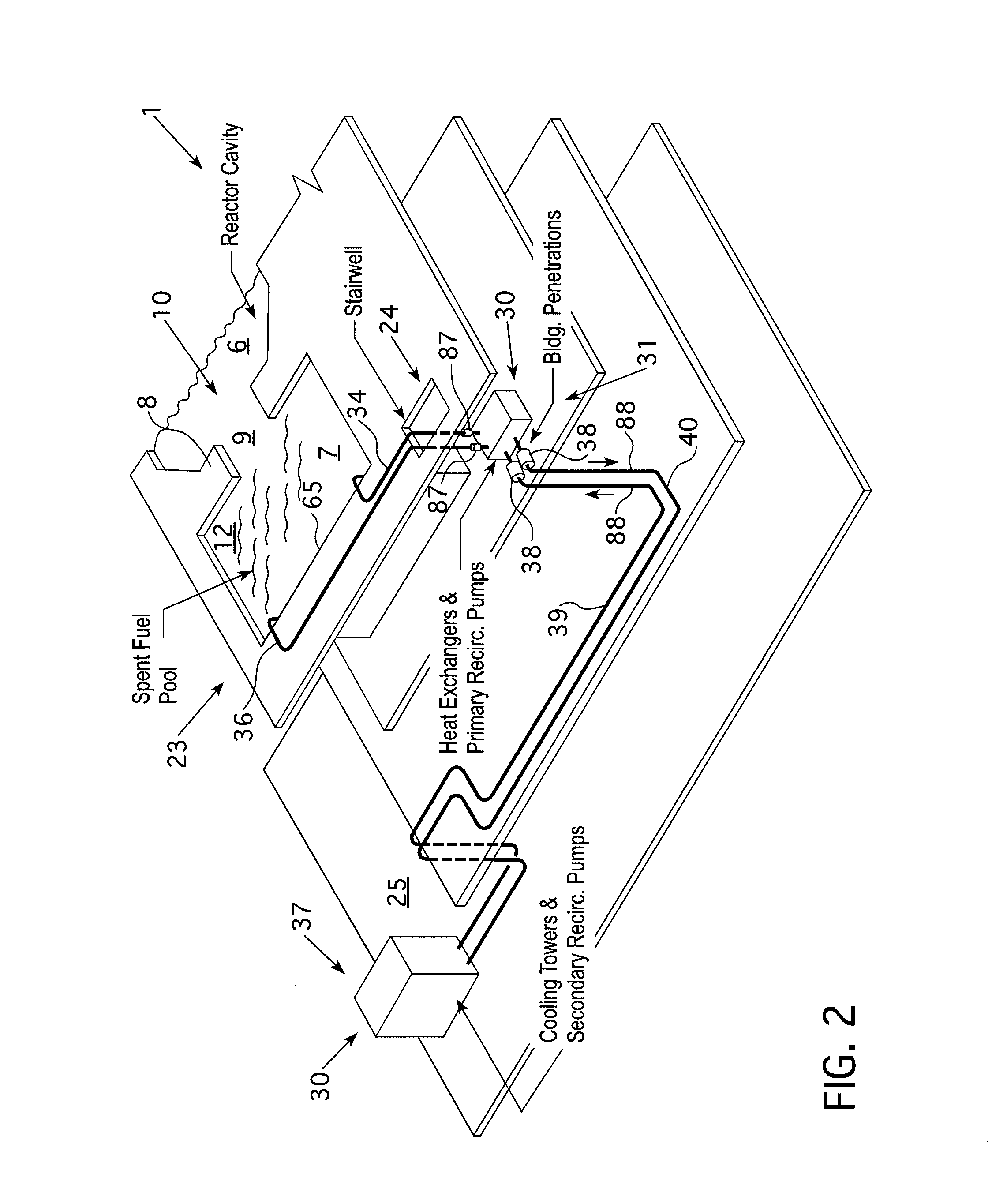Semi-portable emergency cooling system for removing decay heat from a nuclear reactor
a nuclear reactor and emergency cooling technology, applied in nuclear engineering, nuclear elements, greenhouse gas reduction, etc., can solve the problems of increasing the cost of shutdown operation, not having sufficient cooling capacity to remove the high level of residual heat generated, and affecting the efficiency of the shutdown operation
- Summary
- Abstract
- Description
- Claims
- Application Information
AI Technical Summary
Benefits of technology
Problems solved by technology
Method used
Image
Examples
Embodiment Construction
[0020]As shown in FIG. 1, in a typical nuclear power generating facility 1, only the pertinent parts of which are shown, a reactor building 23 contains a reactor vessel 2, which contains a core 3, which comprises numerous elements of nuclear fuel 4, usually in the form of fuel bundles, commonly referred to as fuel assemblies. During power generating operations reactor vessel 2 is closed by the top or head 5. Reactor vessel 2 is positioned within a reactor cavity 6 (shown in FIGS. 1 and 2), which is fluidly connected to a spent fuel pool 7 during outages. In the facility embodiment shown in FIGS. 1 and 2, the spent fuel pool 7 is separated from the reactor cavity by a wall 8 having a closable opening 9, closable by a gate (not shown) or other means known in the art to isolate the spent fuel pool 7 from the reactor cavity 6. Since various embodiments of nuclear power generating facilities 1 are possible, the spent fuel pool 7 and the reactor cavity 6 will be jointly and separably refe...
PUM
 Login to View More
Login to View More Abstract
Description
Claims
Application Information
 Login to View More
Login to View More - R&D
- Intellectual Property
- Life Sciences
- Materials
- Tech Scout
- Unparalleled Data Quality
- Higher Quality Content
- 60% Fewer Hallucinations
Browse by: Latest US Patents, China's latest patents, Technical Efficacy Thesaurus, Application Domain, Technology Topic, Popular Technical Reports.
© 2025 PatSnap. All rights reserved.Legal|Privacy policy|Modern Slavery Act Transparency Statement|Sitemap|About US| Contact US: help@patsnap.com



